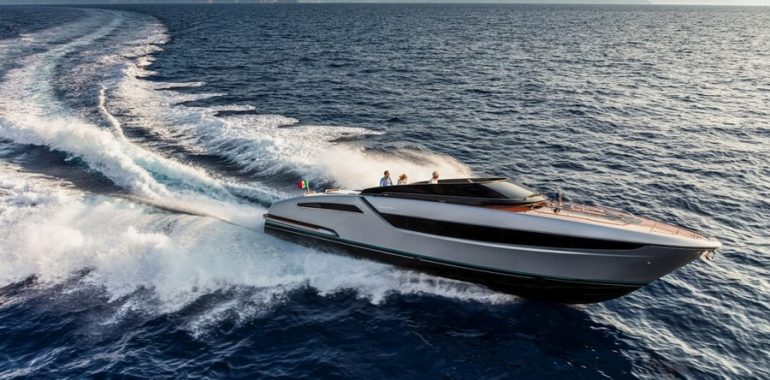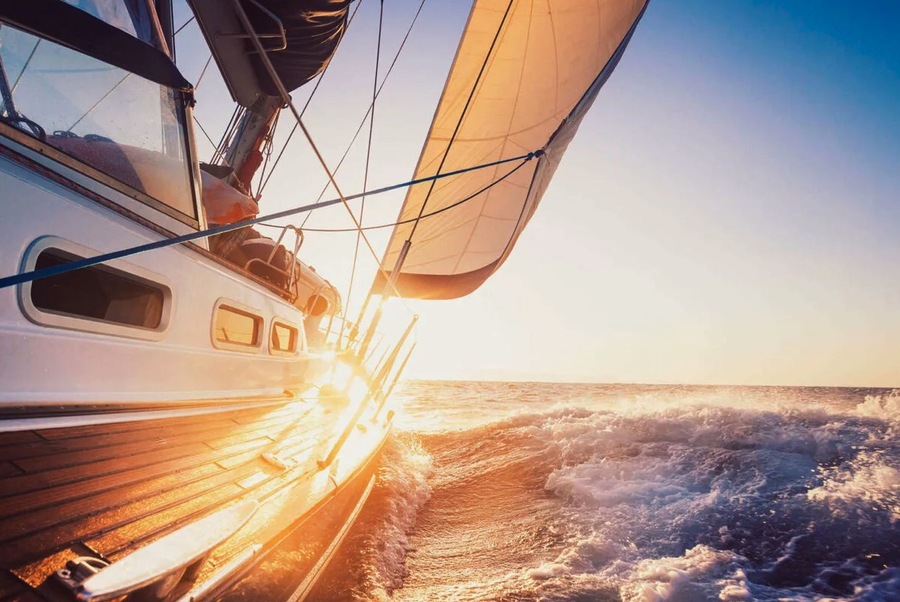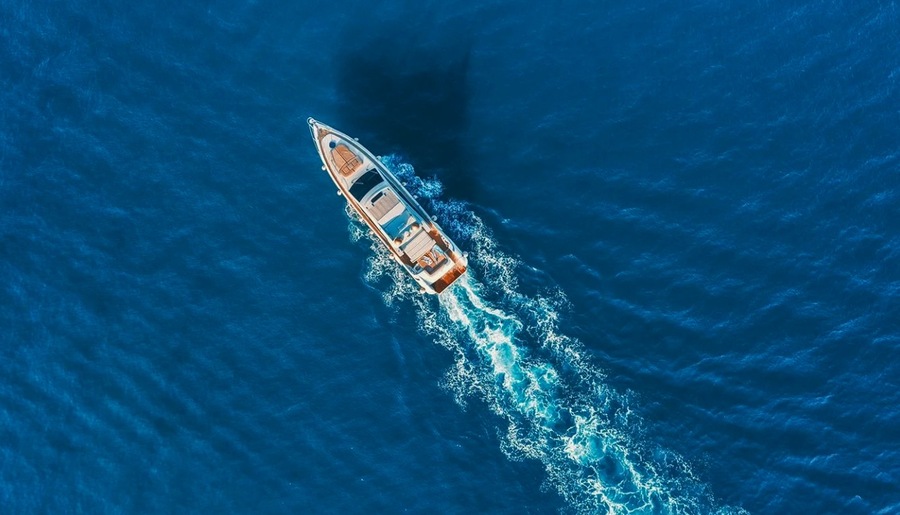Exploring the Open Seas: Understanding Yacht Drives

Owning a yacht opens up a world of exploration and adventure. From traversing serene waters and visiting remote islands to enjoying the tranquility of solitude on the open sea, yachts offer unparalleled experiences. Central to this experience is the drive system, a crucial component that determines the yacht’s performance, efficiency, and suitability for various activities. Whether you’re cruising along a coastal paradise or embarking on a transoceanic voyage, the drive system influences how smoothly and swiftly you can navigate the waters. For those considering a yacht charter, understanding the different drive systems can enhance the overall experience. This article delves into the various types of drives for yachts, explaining their roles, definitions, and the pros and cons associated with each type, ensuring you can make an informed choice for your maritime needs.
Page Content
What is a Drive for a Yacht?
A drive system in a yacht refers to the mechanism that transmits power from the engine to the propeller, enabling the vessel to move through the water. The choice of drive affects the yacht’s speed, maneuverability, fuel efficiency, and maintenance requirements. Drives come in various designs, each suited to different types of yachts and boating activities. Understanding the various types of drives is essential for selecting the right one based on your needs and preferences. Whether you prioritize speed, ease of handling, or fuel economy, the drive system is a key determinant of your yacht’s overall performance and operational costs.

The Role of Drives for Yachts
Speed and Performance
Different drives offer varying speed capabilities and acceleration rates. High-speed drives are crucial for racing yachts and performance boats, while slower, more robust systems are better for long-distance cruising.
Maneuverability
Some drives provide superior handling and turning capabilities. This is especially important when navigating through crowded marinas or performing precise docking maneuvers.
Fuel Efficiency
The type of drive impacts fuel consumption, which is crucial for long voyages. Efficient drives reduce operational costs and extend the range of the yacht.
Maintenance
Drives differ in their maintenance needs and longevity. Some systems require frequent upkeep, while others are more durable and easier to maintain.
Suitability for Specific Conditions
Certain drives are better suited for particular water conditions and yacht types. For instance, water-jet drives are ideal for shallow waters, while surface drives excel in high-speed conditions.
Types of Drives for Yachts
Shaft Drive
A traditional drive system where the engine is mounted inside the hull, and a long shaft extends from the engine to the propeller.
Pros
– Reliable and well-understood technology.
– Simple construction with fewer moving parts, leading to less frequent breakdowns.
– Good for heavy, long-distance cruising yachts, providing steady and powerful propulsion.
Cons
– Requires more space inside the hull, which can limit interior design and living space.
– Can be less efficient at higher speeds due to the drag created by the exposed shaft.
– Higher drag due to the exposed shaft and propeller, reducing fuel efficiency.
Common Use: Most often used in larger, long-distance cruising yachts and traditional sailboats where reliability and durability are paramount.
V-Drive
A variation of the shaft drive where the engine is placed near the stern, facing backward, with the drive shaft forming a “V” shape.
Pros
– Saves space by allowing for a more compact engine placement, freeing up midship space for cabins and amenities.
– Improved weight distribution and balance, enhancing the yacht’s stability.
Cons
– More complex construction than straight shaft drives, potentially leading to higher initial costs and maintenance complexity.
– Can be harder to access for maintenance, making repairs more challenging and time-consuming.
Common Use: Often used in inboard motorboats and some sportfishing yachts where space optimization and balanced weight distribution are important.
Sterndrive
Also known as an inboard/outboard (I/O) drive, it combines features of both inboard and outboard engines, with the engine inside the hull and the drive unit outside.
Pros
– Good performance and fuel efficiency, making it suitable for a wide range of boating activities.
– Easier to maneuver in tight spaces due to the steerable drive unit.
– Engine noise is reduced inside the hull, enhancing onboard comfort.
Cons
– More complex and can be more expensive to maintain, with both inboard and outboard components requiring attention.
– Susceptible to corrosion and damage due to the external drive unit, necessitating regular maintenance and protection.
Common Use: Popular in recreational powerboats and small to mid-sized cruisers where performance and maneuverability are critical.
Pod Drive
An advanced drive system where the engine connects to a pod containing the transmission and propeller, which can rotate 360 degrees.
Pros
– Exceptional maneuverability and docking ease due to the 360-degree rotation capability.
– Improved fuel efficiency and speed by optimizing the propulsion dynamics.
– Reduced vibration and noise, providing a smoother and quieter ride.
Cons
– Higher initial cost and complex installation, requiring specialized expertise.
– Requires specialized maintenance and repair, which can be more expensive and less accessible.
Common Use: Frequently found in luxury yachts and high-performance boats where advanced maneuverability and efficiency are desired.
Surface Drives
Designed for high-speed performance, with the propellers partially submerged, reducing drag.
Pros
– Excellent for achieving high speeds, making them ideal for racing and performance boating.
– Reduced drag increases efficiency at high speeds, enhancing overall performance
Cons
– Poor performance at lower speeds, limiting their versatility.
– Increased complexity and maintenance requirements, making them less suitable for casual boating.
Common Use: Often used in racing yachts and high-performance powerboats where speed is the primary goal.

Water-Jet Drives
Uses a jet of water for propulsion, with water drawn into the drive unit and expelled at high velocity.
Pros
– Highly maneuverable and safe in shallow waters, reducing the risk of propeller damage.
– No exposed propellers reduce the risk of damage and injury, making them ideal for areas with debris or marine life.
Cons
– Less efficient at cruising speeds, which can limit their range and fuel efficiency.
– Can be more expensive and complex to maintain due to the advanced technology involved.
Common Use: Ideal for jet boats, rescue vessels, and yachts operating in shallow or debris-filled waters where maneuverability and safety are crucial.
Hybrid Installation
Combines traditional combustion engines with electric motors, allowing for versatile operation modes.
Pros
– Improved fuel efficiency and reduced emissions, making them environmentally friendly.
– Quiet operation in electric mode, enhancing onboard comfort and reducing noise pollution.
– Versatility in power sources, allowing for flexible operation depending on conditions and needs.
Cons
– Higher initial cost and complexity, requiring significant investment and expertise.
– Requires advanced technology and maintenance, which can be more challenging and costly.
Common Use: Increasingly popular in eco-friendly yachts and vessels aimed at reducing environmental impact, appealing to environmentally conscious yacht owners.
Conclusion
Choosing the right drive for your yacht is crucial for optimizing performance, efficiency, and overall enjoyment on the water. Whether you’re looking for the reliability of a shaft drive, the maneuverability of a pod drive, or the eco-friendliness of a hybrid system, understanding the pros and cons of each type helps in making an informed decision. As technology advances, the variety and sophistication of yacht drives will continue to evolve, offering even more tailored solutions for maritime enthusiasts. Whether you’re a seasoned sailor or a novice explorer, the right drive system can enhance your yachting experience, making every journey more enjoyable and efficient.